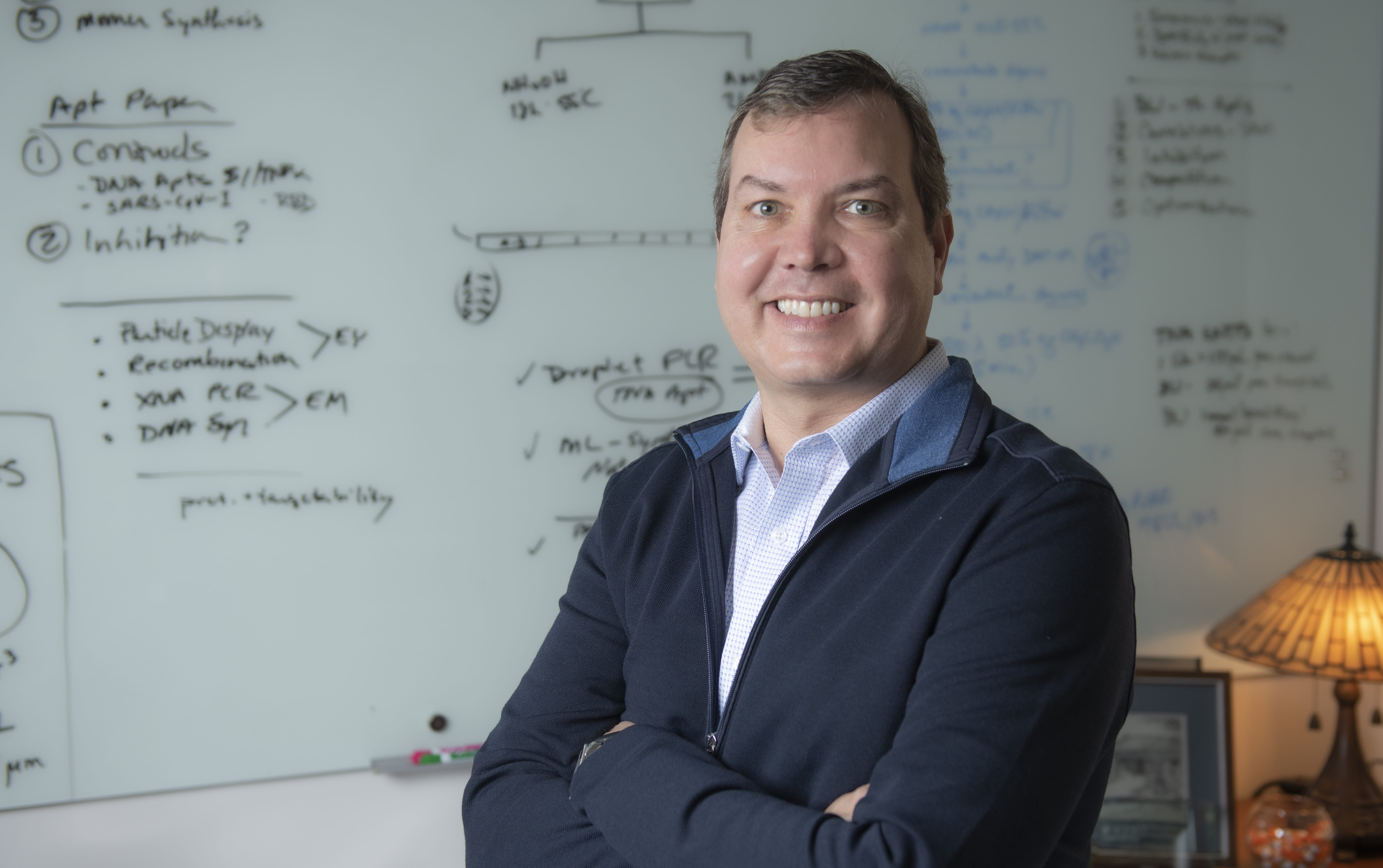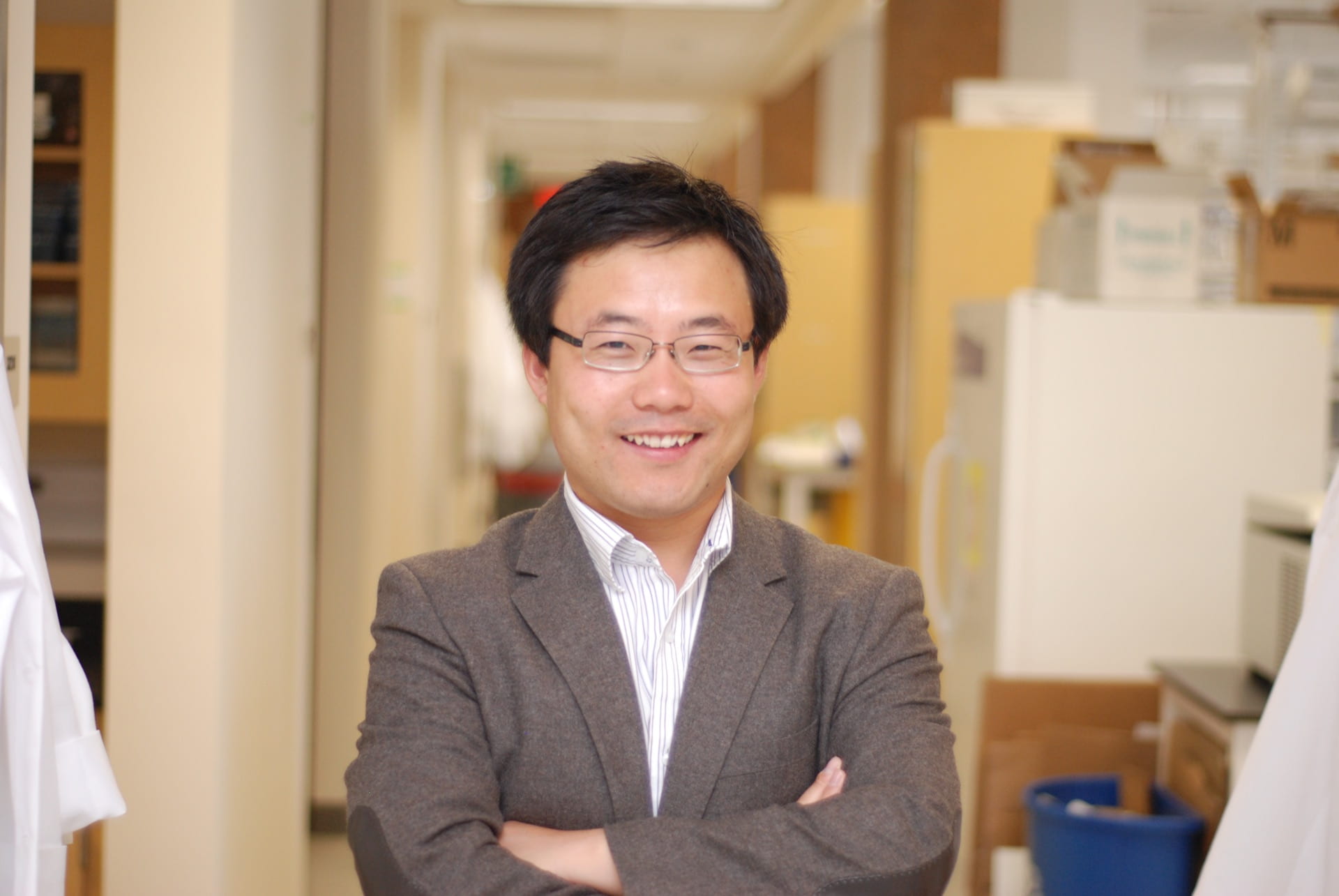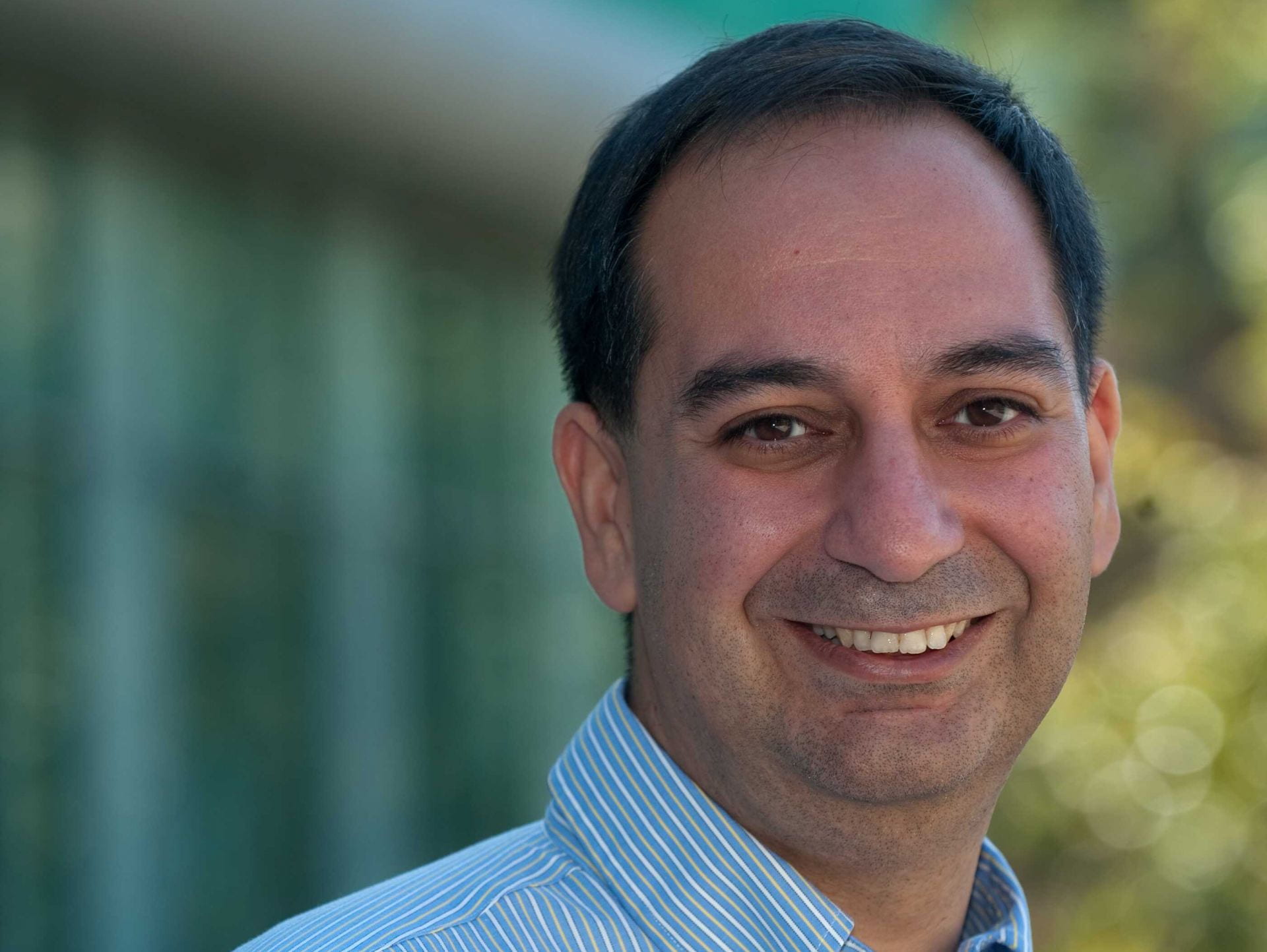UCI scientists develop gene silencing DNA enzyme that can target a single molecule
Breakthrough holds promise for disease treatments, precision medicine

Irvine, Calif., May 8, 2023 — Researchers from the University of California, Irvine have developed a DNA enzyme – or DNAzyme – that can distinguish between two RNA strands inside a cell and cut the disease-associated strand while leaving the healthy strand intact. This breakthrough “gene silencing” technology could revolutionize the development of DNAzymes for treating cancer, infectious diseases and neurological disorders.
DNAzymes are nucleic acid enzymes that cut other molecules. Through chemistry, UCI’s team developed the Dz 46 enzyme, which specifically targets the allele-specific RNA mutation in the KRAS gene, the master regulator of cell growth and division, found in 25 percent of all human cancers. A description of how the team achieved this enzyme evolution was recently published in the online journal Nature Communications.
“Generating DNAzymes that can effectively function in the natural conditions of cell systems has been more challenging than expected,” said corresponding author John Chaput, UCI professor of pharmaceutical sciences. “Our results suggest that chemical evolution could pave the way for development of novel therapies for a wide range of diseases.”
Gene silencing has been available for more than 20 years and some FDA-approved drugs incorporate various versions of the technology, but none can distinguish a single point mutation in an RNA strand. The benefit of the Dz 46 enzyme is that it can identify and cut a specific gene mutation, offering patients an innovative, precision medicine treatment.
The DNAzyme resembles the Greek letter omega and acts as a catalyst by accelerating chemical reactions. The “arms” on the left and right bind to the target region of the RNA. The loop binds to magnesium, and folds and cuts the RNA at a very specific site. But generating DNAzymes with robust multiple turnover activity under physiological conditions required some ingenuity, because DNAzymes are normally very dependent on concentrations of magnesium not found inside a human cell.
“We solved that problem by re-engineering the DNAzyme using chemistry to reduce its dependency on magnesium and did so in such a way that we could maintain high catalytic turnover activity,” Chaput said. “Ours is one of the very first, if not the first, example of achieving that. The next steps are to advance Dz 46 to a point that it’s ready for pre-clinical trials.”
Team members Kim Thien Nguyen, project scientist, and Turnee N. Malik, postdoctoral scholar, both from the Department of Pharmaceutical Sciences, also participated in this study.
The researchers and UCI have filed provisional patent applications on the chemical composition and cleavage preference of Dz 46. Chaput is a consultant for drug development company 1E Therapeutics, which supported this work.
About UCI’s Brilliant Future campaign: Publicly launched on Oct. 4, 2019, the Brilliant Future campaign aims to raise awareness and support for UCI. By engaging 75,000 alumni and garnering $2 billion in philanthropic investment, UCI seeks to reach new heights of excellence in student success, health and wellness, research and more. The School of Pharmacy & Pharmaceutical Sciences plays a vital role in the success of the campaign. Learn more by visiting https://brilliantfuture.uci.edu/school-of-pharmacy-and-pharmaceutical-sciences.
About the University of California, Irvine: Founded in 1965, UCI is a member of the prestigious Association of American Universities and is ranked among the nation’s top 10 public universities by U.S. News & World Report. The campus has produced five Nobel laureates and is known for its academic achievement, premier research, innovation and anteater mascot. Led by Chancellor Howard Gillman, UCI has more than 36,000 students and offers 224 degree programs. It’s located in one of the world’s safest and most economically vibrant communities and is Orange County’s second-largest employer, contributing $7 billion annually to the local economy and $8 billion statewide. For more on UCI, visit www.uci.edu.
Media access: Radio programs/stations may, for a fee, use an on-campus ISDN line to interview UCI faculty and experts, subject to availability and university approval. For more UCI news, visit news.uci.edu. Additional resources for journalists may be found at communications.uci.edu/for-journalists.


